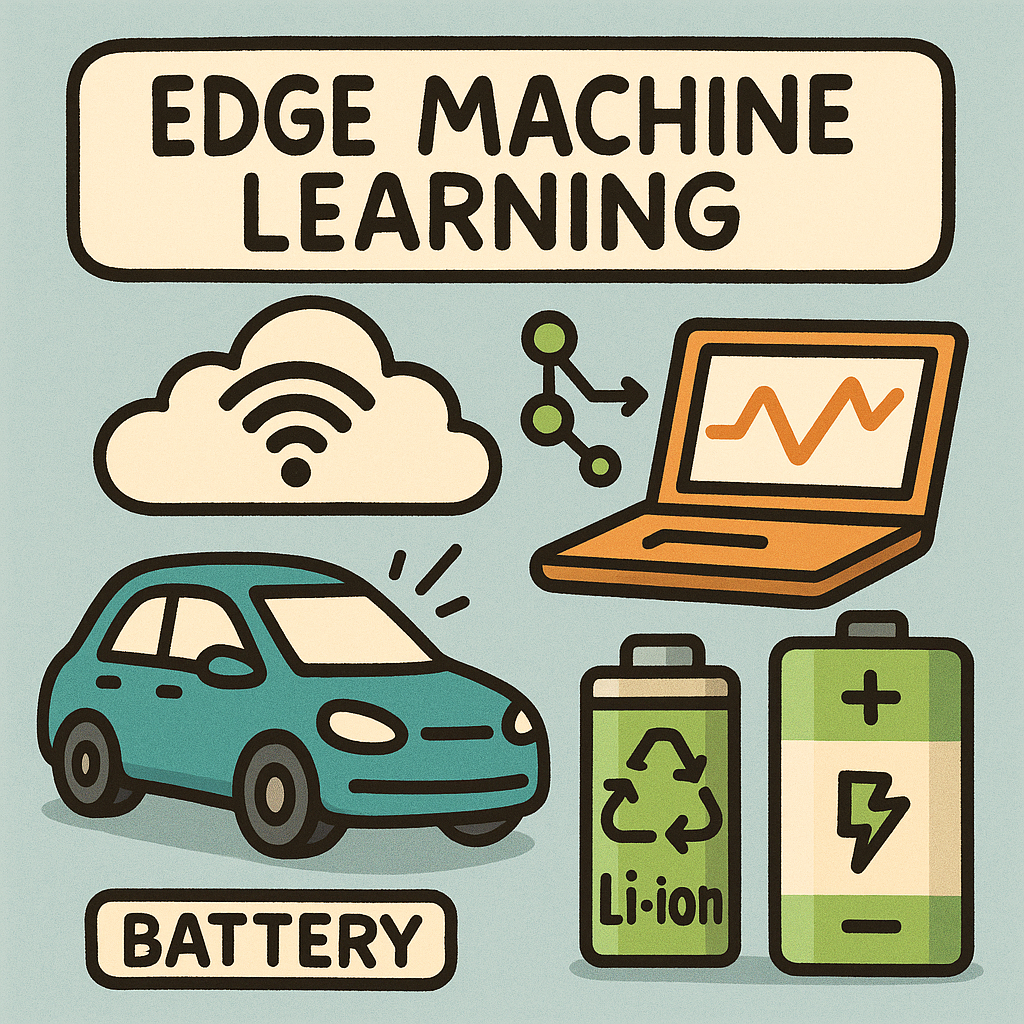Understanding Edge Machine Learning in Battery Management Systems
As the electric vehicle (EV) market continues to expand, the need for efficient and reliable battery management systems (BMS) has never been more critical. One of the most pressing challenges in this domain is the degradation of lithium-ion batteries, which can significantly impact vehicle performance and longevity. Implementing edge machine learning (EML) for real-time predictive diagnostics offers a promising solution to this problem. However, this approach is fraught with engineering challenges and design considerations that need careful navigation.
The Problem of Lithium-Ion Degradation
Lithium-ion batteries are susceptible to various degradation mechanisms such as electrolyte breakdown, lithium plating, and thermal runaway. These issues can lead to not only reduced battery capacity but also safety hazards. Traditional BMS typically rely on static models and historical data to predict battery health, which can be insufficient as these models often fail to adapt to real-time conditions and usage patterns.
Why Edge Machine Learning?
The integration of EML into BMS allows for on-device processing, enabling real-time data analysis and decision-making right at the source. This is particularly beneficial for EVs, where latency in diagnostics can lead to suboptimal performance or even failures during operation. By processing data locally, we can reduce reliance on cloud services, which often introduce delays and require continuous connectivity.
Hardware Considerations
Implementing EML requires careful selection of hardware components. The heart of an edge device often comprises an application-specific integrated circuit (ASIC) or a field-programmable gate array (FPGA), both capable of handling complex algorithms efficiently. These components must balance performance with power consumption, as EVs are particularly sensitive to battery usage. Additionally, sensors like temperature, voltage, and current monitors must be integrated into the system to capture critical data points that feed the ML models.
Firmware and Connectivity
On the firmware side, developing a robust and flexible operating system is essential. The firmware must support various machine learning frameworks, allowing for quick updates and model retraining as more data is collected. Additionally, connectivity options like Bluetooth or Wi-Fi are crucial for occasional data offloading or updates, without compromising real-time processing capabilities.
Algorithms for Predictive Diagnostics
Choosing the right algorithms is a pivotal aspect of implementing EML. Neural networks and decision trees are popular choices due to their ability to handle non-linear relationships in the data. However, they require significant computational resources, which might not be feasible on all hardware. Thus, techniques like model quantization or pruning are often employed to reduce the model size and improve inference speed without sacrificing accuracy. It’s a balancing act between model complexity and the constraints of our edge hardware.
Real-World Design Tradeoffs
When designing an EML system for BMS, engineers face numerous tradeoffs. For instance, while more complex models can yield better performance, they also demand greater computational resources and power, which can negatively impact the vehicle’s overall efficiency. Additionally, accuracy in predictions must be weighed against the speed of inference. A model that takes too long to process data may not offer the real-time insights that are crucial for effective battery management.
Challenges and Solutions
One of the most significant challenges in implementing EML for lithium-ion degradation diagnostics is the quality and quantity of data. Training models require extensive datasets that represent various operating conditions and usage patterns. This necessitates a strategy for data augmentation and synthetic data generation to bolster datasets. Moreover, continuous learning mechanisms should be in place, allowing the model to adapt to new data as it comes in, thereby improving its predictive capabilities over time.
Another challenge lies in ensuring model robustness. Edge devices are often exposed to varying environmental conditions, such as temperature fluctuations and vibrations. It’s essential to train models that can generalize well across these conditions, which may require rigorous testing and validation phases. Employing techniques such as transfer learning can help in adapting pre-trained models to the specific conditions of a new environment.
Conclusion: The Path Forward
As we move toward more advanced electric vehicles, integrating edge machine learning into battery management systems will be pivotal in addressing lithium-ion degradation effectively. By focusing on hardware-software co-design, optimizing algorithms, and tackling the challenges of data quality and model robustness, we can leverage EML to enhance the safety and efficiency of EVs. The journey is complex, but the potential rewards—improved battery life, enhanced vehicle performance, and greater consumer confidence—make it a worthwhile endeavor.



